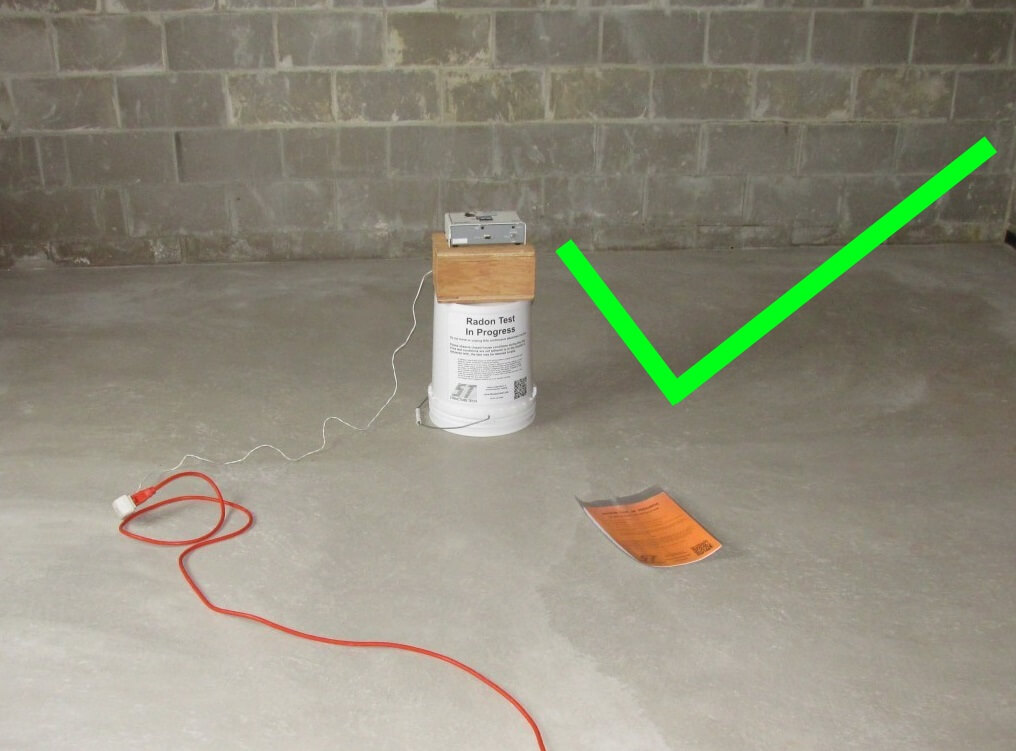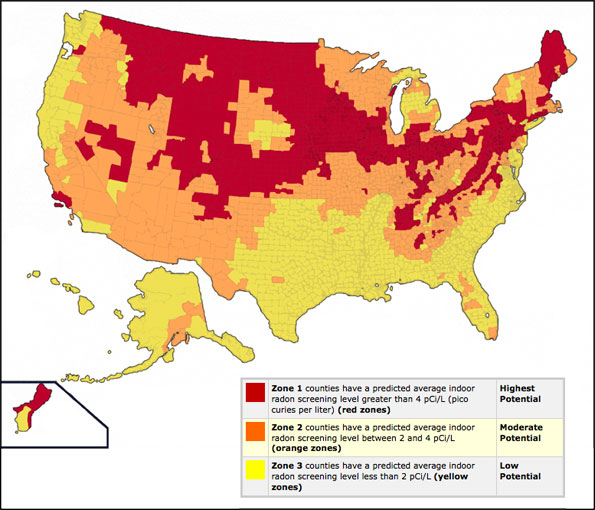How can I lower my danger?
While the wellness risk from radon direct exposure below the Canadian guideline is small there is no degree that is risk totally free. It is the choice of each home owner to choose what degree of radon exposure they are willing to approve. The graph below compares therisk of dying of radon-induced lung cancer cells to various other better understood risks such as auto mishaps, carbon monoxide as well as home fires. The threat of lung cancer from radon gas exposure is considerable but avoidable. The only means to understand your radon level is to examine as well as if high levels are located take action to lower.
BREWSTER, NY-- Radon is the leading reason for lung cancer cells in the USA among non-smokers. For those who smoke, radon substantially increases the cancer cells risk.
Does seller have to fix radon?
It's very likely that your future buyer will make you fix the radon problem before they will purchase the home. It's good to just take care of it during your real estate deal. Sometimes the seller pays for it all, sometimes they fund a credit and sometimes there is a split.
Direct exposure to much lower degrees of this known carcinogen might take place inside your home in houses improved dirt that has a high radium material and also is launching radon right into the surrounding setting. The searching for of unacceptably high levels of radon in some house settings has actually triggered concern concerning the risk of lung cancer and also passion in extensive testing of homes. Family levels of radon never ever resemble the level experienced by miners, so some uncertainty stays regarding the overall risk presented by exposure to home radon. However, a lot of authorities agree there is a small however genuine enhanced threat of lung cancer associated with elevated home degrees.
What kind of cancer is caused by radon?
Radon decays quickly, giving off tiny radioactive particles. When inhaled, these radioactive particles can damage the cells that line the lung. Long-term exposure to radon can lead to lung cancer, the only cancer proven to be associated with inhaling radon.
Radon address search
If you can maintain your interior radon degrees at 2 pCi/L or reduced, you'll encounter really low enhanced danger of creating lung cancer as a result of radon. When you reach the 1.3 pCi/L degree that is typical for indoor air, only 2 non-smokers out of 1,000 will certainly develop lung cancer cells specifically because of the exposure. It's impossible to reach a no percent risk in locations where radon prevails, yet reducing the gas degree as long as is possible is worth the initiative. Smoking remains the primary cause of lung cancer in the United States.
Is radon really a big deal?
Radon is a radioactive gas that has been found in homes all over the United States. It comes from the natural breakdown of uranium in soil, rock, and water and gets into the air you breathe. Radon typically moves up through the ground to the air above and into your home through cracks and other holes in the foundation.
However, radon is usually the second biggest contributor to the condition in any kind of given year. You can increase your threat for lung cancer 9 times over when you combine a smoking habit with a residence that has harmful radon levels.
Why is radon bad for you?
Radon produces a radioactive dust in the air we breathe. The dust is trapped in our airways and emits radiation that damages the inside of our lungs. This damage, like the damage caused by smoking, increases our risk of lung cancer.
Will opening windows reduce radon?
Opening windows improves air circulation and ventilation, helping move radon out of the house and mixing radon-free outside air with indoor air. Opening basement windows helps reduce negative air pressure, diluting radon with clean outdoor air.
How long does radon stay in the air?
It can be found in all 50 states. Once produced, radon moves through the ground to the air above. Some remains below the surface and dissolves in water that collects and flows under the ground's surface. Radon has a half-life of about four days - half of a given quantity of it breaks down every four days.
How long do you have to be exposed to radon https://zenwriting.net/harinnxd80/miners-that-had-inhaled-radon-showed-a-high-occurrence-of-lung-cancer-cells-so before it becomes a problem?
Radon is a radioactive gas and exposure to it causes 21,000 lung cancer deaths per year—only smoking causes more. Because you can't see, smell or taste radon, it's important to periodically test the air in your home. Believing you live in a region not affected by radon is just one of the myths about this deadly gas.
How much does radon cost per gram?
Radon is available at a cost of about $4/mCi.
How do I know if my house has radon?
In fact, you're probably breathing it in every day, even if it's at a low level. However, you can't tell if you're breathing it in at a high level. The danger in radon exposure is that you can't see it, taste it, or smell it. And you won't have any symptoms to alert you.
- For many years, information that tracks radon degrees shows that a big portion of Pennsylvania homes have a serious radon trouble.
- Radon gas is dangerous, and if the issue goes neglected, the radon focus continues to climb inside your residence.
- New Jacket homes as well as Delaware residences are thought about at risk too because of their closeness to the area.
- Radon gas enters your residence or various other residential property from the outdoors, and also in time, progressively gathers to unsafe degrees that can cause an enhanced risk of lung cancer or respiratory concerns.
What is radon in the home?
Radon is a radioactive gas that has been found in homes all over the United States. It comes from the natural breakdown of uranium in soil, rock, and water and gets into the air you breathe. Radon typically moves up through the ground to the air above and into your home through cracks and other holes in the foundation.

What causes radon?
Being exposed to radon for a long period of time can lead to lung cancer. Radon gas in the air breaks down into tiny radioactive elements (radon progeny) that can lodge in the lining of the lungs, where they can give off radiation. This radiation can damage lung cells and eventually lead to lung cancer.
Is it hard to sell a house with radon?
Fortunately, it's not hard to sell a house with radon, provided that you alert potential buyers and mitigate the problem, say Brian Thomas, a top real estate agent in the Denver, Colorado area, with 16 years of experience. “For as much fear and uncertainty as radon causes, there's an easy fix.”
How effective is radon remediation?
The Surgeon General and the EPA recommend testing for radon and reducing radon in homes that have high levels. Fix your home if your radon level is confirmed to be 4 picocuries per liter (pCi/L) or higher. Radon reduction systems work. Some radon reduction systems can reduce radon levels in your home by up to 99%.
How often should you test for radon?
Living pattern changes Whenever there is a change in your home, you should perform local radon testing. It's also recommended that you test your home for radon at least twice a year too. If your tests come back unusually high, then you should order one or two more tests so that you can compare the results.
Would you buy a house with radon?
Radon is a naturally occurring radioactive gas which may be found in indoor environments such as homes, schools, and workplaces. Radon is the most important cause of lung cancer after smoking.
Does home insurance cover radon mitigation?
homeowners insurance and radon remediation While home insurance is designed to financially protect you from sudden and unexpected perils such as fire or theft, it typically won't cover things that can be considered related to home maintenance like radon testing and mitigation.
Is radon only in the basement?
Radon is completely odorless as well as being invisible. Because it is often found unexpectedly in basements, some people mistakenly believe that it only occurs in basements. Most commonly homes with basements are suspect for having higher radon levels.
How common is radon in a home?
It's common: About 1 in every 15 homes has what's considered an elevated radon level. The gas is odorless and invisible, says the EPA, and it causes no immediate symptoms, so the only way to know if your home is affected is by testing your individual residence.
How many people die each year from radon?
Radon is responsible for about 21,000 lung cancer deaths every year. About 2,900 of these deaths occur among people who have never smoked.
Is radon something to worry about?
The average home has about 1.3 pCi/L of radon. Such levels aren't enough to worry about, but under the right conditions, they could make you sick. According to the EPA, a nonsmoker who was exposed to average levels of radon for a lifetime would have a 1 in 500 risk of developing lung cancer.

Can I install my own radon mitigation system?
In most cases, pros charge about $1,500 to install a radon mitigation system, but you can do it yourself for only about $500 in materials. So if you're fairly handy and have some carpentry, plumbing and electrical skills, you can install your own system in a weekend and save yourself a thousand bucks!